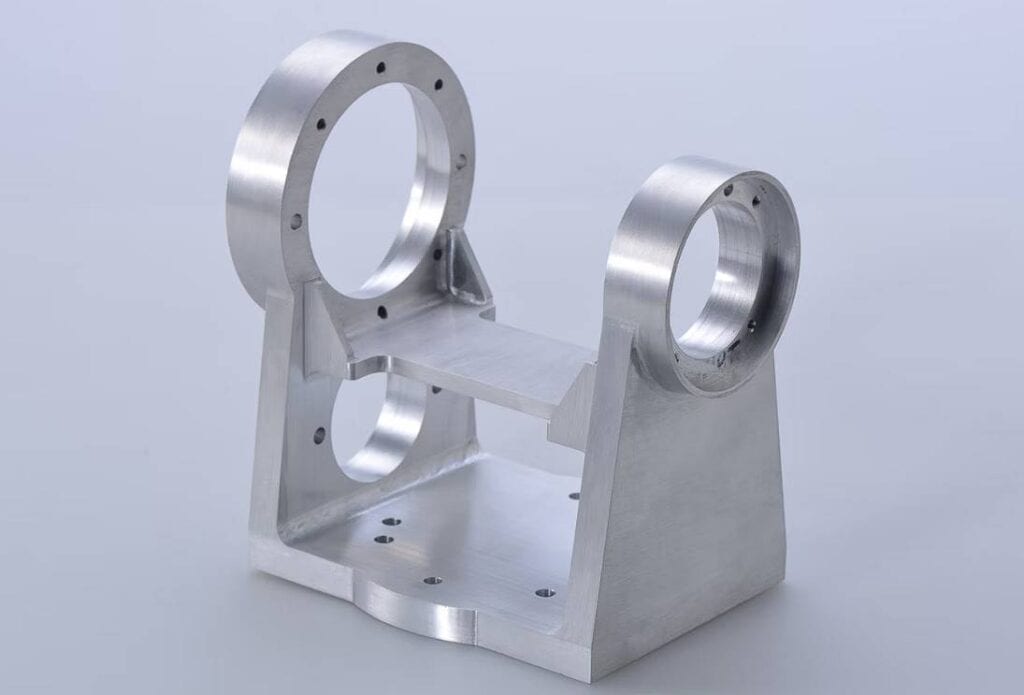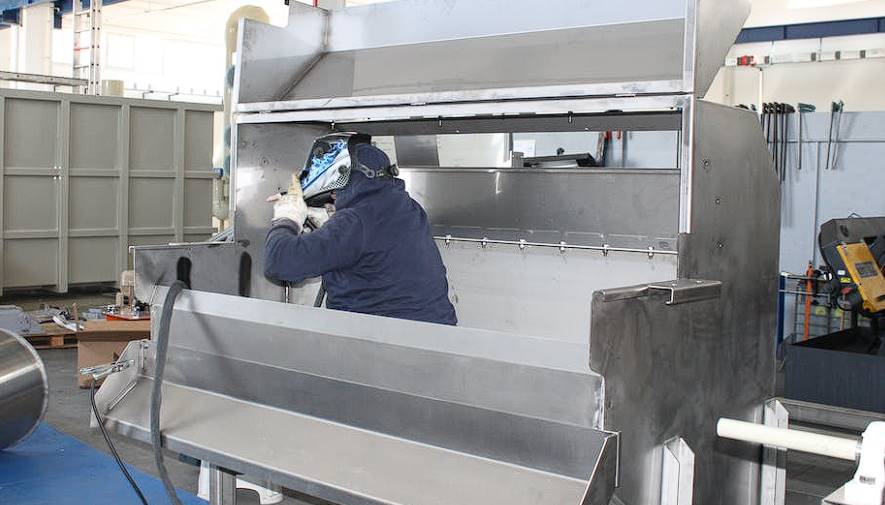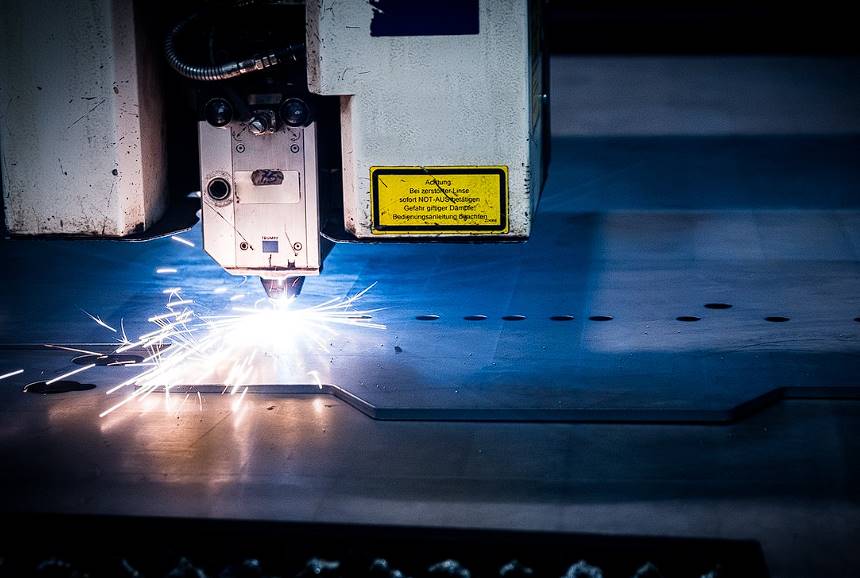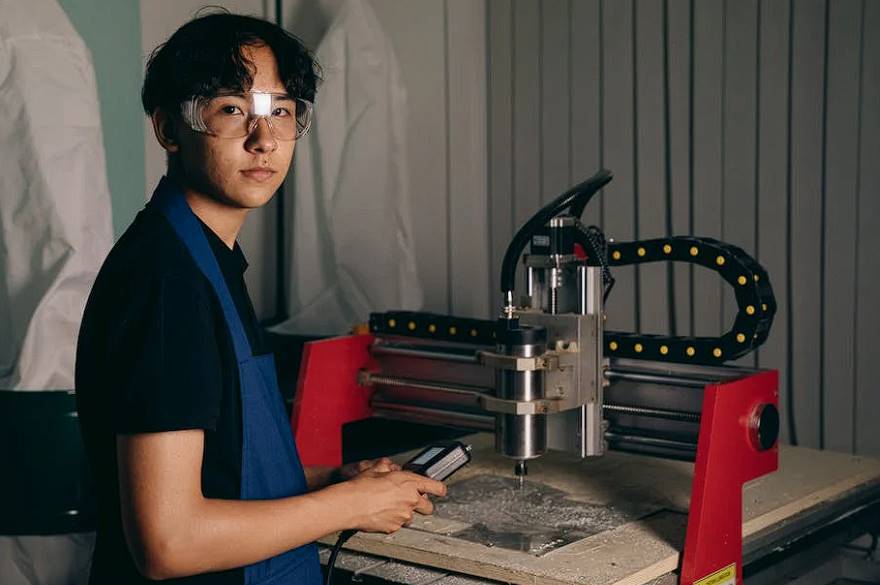Want to ignite your welding skills and create stunning metalwork? First and foremost, if you want professional-quality results from your MIG welding, you need professional-quality equipment. This article will take you deep into MIG welding, covering all the bases you need to know before purchasing. We will explain everything to you, from where the electricity comes from to how the cables are fed to how the gas shielding and safety features work. To fully realise your welding potential, you must learn MIG welding.
What is MIG welding?
Definition of MIG welding. MIG (Metal Inert Gas) welding, or Gas Metal Arc Welding (GMAW), is a welding technique in which an electrical arc is formed between a wire electrode and the metal workpiece, melting and joining the two metals together.

Choosing the Right Welding Machine
Welders are aware that there are several considerations to make when purchasing a welding machine. For example, if you want a high-quality weld, you must be picky about the equipment you use, ensuring it has enough amperage without breaking the bank. These guidelines will ensure you prioritise the proper criteria when researching and purchasing a welding machine.
Learn the Right Welding Technique
Before purchasing a welding machine, it's important to have a plan for how you'll be welding. Unfortunately, not all welders have the flexibility to use a variety of techniques. Machines that can do MIG, TIG, and Stick welding are available. On the other hand, equipment can only perform one or two types of welding. So, knowing the approach you'll be taking with the equipment at hand is essential.
You Must Know What You Are Welding
When deciding on a welding technique, the metal being welded is crucial. Welding stainless steel can be done with several techniques, including MIG, TIG, and Stick. Stick welding and other similar techniques should be avoided if aluminium is to be welded. Because of the diverse characteristics of the metals that can be welded. Different metals have varying toughness, corrosion resistance, and electrical conductivity.
Consider Your Knowledge and Skills
All welding techniques have advantages, but not all are equally accessible to beginners. MIG welding is great for beginners since it's straightforward to pick up and gives you the tools to produce high-quality welds quickly. Stick welding is something you should wait to dive into. Once you get through the beginner level, you have every chance of succeeding. Jumping headfirst into a sophisticated welding procedure without the proper expertise or experience would certainly result in accidents and poor welds. Our advice is to stay away from both.
Consider the Cost
When looking for the best welding machine, it's also crucial to think about your budget. Learn here what to look for in a good machine and where to find one at a reasonable price. Remember that a welding machine should not break the bank, but neither are these machines. We'll talk more about the dangers of setting an unrealistic budget later on, but for now, know that you shouldn't buy cheap devices because they're cheap.
Amperage and voltage must be prioritised.
The cost of welding equipment rises and falls with the amperage and voltage needs of individual welds. The cost of a device increases the amount of amperage (or "current") it requires. Therefore, a machine with a high amperage output is necessary for welding thicker metals. Conversely, quality welds can be accomplished with thinner metals using less power.
You probably realise now how necessary amperage and voltage are, but what are they, exactly? Unfortunately, the two terms are sometimes confused since they initially describe the same thing.
"amperage" describes the amount of electricity used to produce your arc. However, voltage refers to the driving power behind that amperage in the first place. Therefore, if the voltage isn't high enough, the electrons won't make it from the electrode to the workpiece. Similarly, the electrode might be harmed by an excessive amperage level.
True, but not all types of welding call for the same amount of pressure to move electrons about. Stick welding, for instance, often requires a higher voltage than TIG welding. The success or failure of the weld depends on the components used. At first glance, greater power may always be preferable, but as you can see, this is only sometimes the case. When welding, it's important to make sure that all of the variables you're working with are compatible with the materials you'll be using.
You Shouldn't Sacrifice Quality for Profits
While it's important to shop for a welding machine within your financial means, you should consider purchasing an inferior brand or model because it's less expensive. Remember that if you want a machine worth your time and money, you must be practical with your spending. It is easy to find reasonably priced top-tier multi-process welding machines, so don't discount the best names in the industry out of hand. While a low-quality welding machine could save you money in the short term, it might cost you more in the long run.
Take Your Needs for Portability Into Account
Mobility may be less important if you plan to stay put for all your weldings. Some do-it-yourself welders prefer to stay in their stations. However, you'll want a portable tool if you need to go between several construction sites. Find lightweight devices that provide the features you require if portable welding equipment is what you're after.
You shouldn't weld with low-quality equipment. To weld properly, safely, and efficiently, you'll require specialised gear. By following these tips, you may choose the best welding machine and avoid typical mistakes like choosing a cheap brand or forgetting mobility. Welding for Less has all the tools you'll need to do the job. We can assist you in locating high-quality welding equipment, safety equipment, electrodes, and other welding supplies at competitive pricing.
Welding Machine Mistakes to Avoid
When looking to buy a welding machine, keep the following in mind:
- Please know your needs precisely: Most people lack clarity about their desires. The correct action can only be determined after careful requirement gathering and analysis. The application procedure would be simplified if you knew what was expected of you.
- Create a financial plan before beginning any major purchases or initiatives. Overinvesting could be a better plan. Create a sum that strikes a balance between your resources and your needs. Most people need help to control their spending habits, leading to overspending and underinvesting. Spend no more than you can comfortably afford, even if you require a buffer of several hundred dollars.
- Keep your facility size in mind: It's important to consider how much open, unobstructed space is at your disposal. You could think of both indoor and outdoor areas. Consider renting a place if you don't already have one, factoring in the cost and expected revenue as you decide.
- Please consider the welding's speed and duty cycle; avoid overworking the welder when it warms up. Welding equipment must be turned off to cool after a certain amount of time. The general public does not appear to observe this guideline. Consider the machine's duty cycle and how quickly it cools down before making a purchase. Ensure your machine's downtime doesn't eat into its useful life.
- Think about the various metals and thicknesses: Stick welders are ideal for thick metals, whereas MIG and TIG are better suited. Cast iron is not suitable for TIG welding, but alloys are. A stick welder will do the trick if you're working with steel or aluminium alloys.
- Consider your workplace and how you're feeling while you're there. Flux-core welders, for example, may perform well in extremely hot and humid conditions. You can use either a MIG or TIG welder in an indoor facility with a stable environment.
The Benefits of Metal Inert Gas Welding
The Speed of MIG Welding
The amount of time required for welding depends on the complexity of the joint and the desired quality of the final weld. However, whether in the hands of a welding amateur or a seasoned fabrication specialist, MIG welding is going to win most, if not all, of the time compared to the other prominent welding techniques. Why? Welding machines, MIG torches with spool guns, and complex industrial applications often use a push-and-pull feed system that relies on a continuously fed electrode.
Efficiency Of Use
When we turn our copywriter loose on some gash plate with one of our equipment, we'll find out how simple MIG welding is for a total newbie. Al tried his hand at oxyfuel welding almost 40 years ago. Thus, he can be classified as a beginner.
MIG welding is simpler to learn and master than other welding techniques like TIG and stick because the torch can be operated with one hand, and other processes, are automated.
Quality of MIG Welds
For the most part, MIG welding may be completed in less time than other welding methods while still producing high-quality welds. In addition, because MIG welding doesn't require flux, slag can't become trapped in the weld, as we'll discuss again below. The result is high-quality welds and lightning-fast turnaround.
Welding with a Long Pass
Another area in which MIG excels is speed. With each stroke of the MIG torch, additional weld metal is deposited. When welding a long, intricate weld, you'll be able to complete it in fewer passes, saving time, improving efficiency, and increasing profitability.
It's All About Penetration
Of course, it does because MIG allows deep penetration and a strong, smooth bead. Plus, it's possible to perform this on a wide range of metals of differing thicknesses.
Aluminium? Sure, no sweat. Iron and steel? No sweat? Magnesium? Not to worry. To achieve great penetration, all you need to do is wrap your head around establishing the appropriate current for the wire and the metal.

Fewer Starts and Stops
When reducing the time spent starting and stopping the welding process, the continuously-fed MIG electrode emerges on top again. Stick welding, and even TIG, requires many starts and stops, like rush-hour traffic. In addition, you'll need to make corrections and install new electrodes before you can resume welding. It all adds up, like the difficulty of getting it to work during rush hour vs leaving early in the morning. You will only believe the results if you try it!
Many Metals and Alloys Can Be Welded Using MIG
Indeed, that is the case. Keep in mind that the first MIG machines were designed for welding the aluminium and magnesium alloys used in the state of California's aeroplane assembly plants. As a result of its adaptability, MIG welding is equally effective on alloys, stainless steel, aluminium, and mild steel. More options for filler materials means more accuracy in matching filler to the metal or alloy of the workpiece.
Cleanliness of MIG Welding
Among electric arc welding techniques, TIG may be the "King of Clean," but MIG isn't far behind and makes stick welding look wonderfully "scuzzy."
Indeed, that is the case. Unlike stick welding, notorious for its flux requirements and slag output, MIG welding is surprisingly clean. One of the secrets to making those high-quality welds is not using flux, which prevents the trapping of slag in the weld.
In addition, the weld spatter is small and alloying components are preserved because of the protective gas barrier.
Conclusion
MIG welding is a welding technique in which an electrical arc is formed between a wire electrode and the metal workpiece, melting and joining the two metals together. Choosing the right welding machine is important to ensure it has enough amperage without breaking the bank. Before purchasing a welding machine, it is important to have a plan for how you'll be welding and consider your knowledge and skills. MIG welding is great for beginners since it's straightforward to pick up and gives you the tools to produce high-quality welds quickly. Stick welding is something you should wait to dive into.
The most important details in this text are that it is important to consider the cost of a welding machine when looking for one, and that amperage and voltage must be prioritised. Amperage refers to the amount of electricity used to produce an arc, while voltage refers to the driving power behind that amperage. Different types of welding require different amounts of pressure to move electrons about, and the success or failure of the weld depends on the components used. Quality should not be sacrificed for profits, and it is important to be practical with your spending. The most important details when buying a welding machine are to know your needs precisely, create a financial plan, consider your facility size, consider the welding's speed and duty cycle, and avoid overworking the welder when it warms up.
Welding for Less can assist you in locating high-quality welding equipment, safety equipment, electrodes, and other welding supplies at competitive pricing. Welding Machine Mistakes to Avoid When looking to buy a welding machine, it is important to know your needs precisely, create a financial plan, consider your facility size, consider the welding's speed and duty cycle, and avoid overworking the welder when it warms up. MIG welding is a popular welding technique due to its speed, efficiency of use, quality of welds, and ability to perform on a wide range of metals of differing thicknesses. It is also easier to learn and master than other welding techniques, as the torch can be operated with one hand and other processes are automated. It is also possible to perform this on a wide range of metals of differing thicknesses, such as aluminium, iron, steel, and magnesium.
MIG welding is an electric arc welding technique that can be used to weld many metals and alloys, such as aluminium and magnesium alloys, stainless steel, aluminium, and mild steel. It is also surprisingly clean, as it does not use flux, preventing the trapping of slag in the weld. The weld spatter is small and alloying components are preserved by the protective gas barrier.
Content Summary
- MIG welding, or Gas Metal Arc Welding (GMAW), is a welding technique that joins metals using an electrical arc.
- Professional-quality equipment is essential for achieving professional-quality results in MIG welding.
- Understanding where the electricity comes from and how cables are fed is important in MIG welding.
- Gas shielding and safety features are crucial aspects to consider in MIG welding.
- Knowing the welding technique you'll be using is important before purchasing a welding machine.
- Different metals require different welding techniques, such as MIG, TIG, or Stick welding.
- Beginners should consider starting with MIG welding due to its ease of use and ability to produce high-quality welds.
- Cost should be considered when purchasing welding equipment, but not at the expense of quality.
- Amperage and voltage requirements vary based on the thickness of the metals being welded.
- Amperage refers to the amount of electricity used, while voltage is the driving power behind the amperage.
- Stick welding may require higher voltage compared to TIG welding.
- Quality welding machines should not be sacrificed for cheaper alternatives.
- Portability should be considered based on the need to move between construction sites.
- Specialised gear is necessary for proper, safe, and efficient welding.
- Prioritise clarity about your welding needs and create a financial plan before purchasing equipment.
- Facility size, welding speed, duty cycle, and the type of metals being welded should be taken into account.
- Flux-core welders are suitable for hot and humid conditions, while MIG or TIG welders are preferable for stable indoor environments.
- MIG welding is faster compared to other welding techniques.
- MIG welding is efficient and can be learned and mastered quickly.
- MIG welding produces high-quality welds without slag.
- MIG welding allows for deep penetration on a wide range of metals.
- A continuous feed of the MIG electrode reduces the need for frequent starts and stops.
- MIG welding is suitable for welding various metals and alloys, including aluminium, stainless steel, and mild steel.
- MIG welding is a cleaner process compared to stick welding, with less flux and slag.
- Weld spatter is minimal in MIG welding, and alloying components are preserved.
- Proper equipment selection and understanding of welding techniques can help avoid mistakes and ensure successful welding.
- Setting a realistic budget is important to balance affordability and quality.
- Consider the available workspace and the environment in which welding will be performed.
- MIG welding provides speed, efficiency, penetration, and versatility in welding different metals.
- Focus on quality equipment and follow proper welding techniques for optimal results.
Frequently Asked Questions
Assess your specific welding requirements, consult with experienced welders or industry professionals, and read customer reviews and product specifications. Ultimately, choosing the right equipment involves considering your budget, the intended applications, and capabilities.
The size of the welder determines its portability and the type of welding projects it can handle. If you require mobility, choose a smaller, more portable welder, while larger welders are ideal for heavy-duty applications.
Look for equipment with features like thermal overload protection, voltage fluctuation protection, and reliable grounding systems to ensure operator safety and prevent damage to the equipment.
Choosing a reputable brand with a track record of quality and customer satisfaction is important. Established brands often provide better warranties, reliable customer support, and access to spare parts.
Yes, ensure that your chosen equipment has readily available accessories such as contact tips, nozzles, gas diffusers, and welding wire. Easy availability of consumables simplifies maintenance and reduces downtime.





















